Polypropylene pellets for injection molding are a versatile and cost-effective material used in the manufacture of a wide range of products. From packaging and household appliances to automotive parts and medical devices, polypropylene is an ideal material due to its durability, chemical resistance, and dimensional stability.
In this blog, we will explore everything you should know about polypropylene pellets for injection molding, including its definition, characteristics, applications, and benefits. Whether you are a manufacturer looking to integrate polypropylene into your production process or a consumer interested in the materials, this blog will provide you with the information you need to make an informed decision.
Related:
- PP compound manufacturer - Ttop 10 world class companies
- 6 polypropylene compounds for automotive applications
- Producing non-woven fabrics with PP filler masterbatch
- HD, PP raffia troubleshooting
I. Polypropylene pellets for injection molding
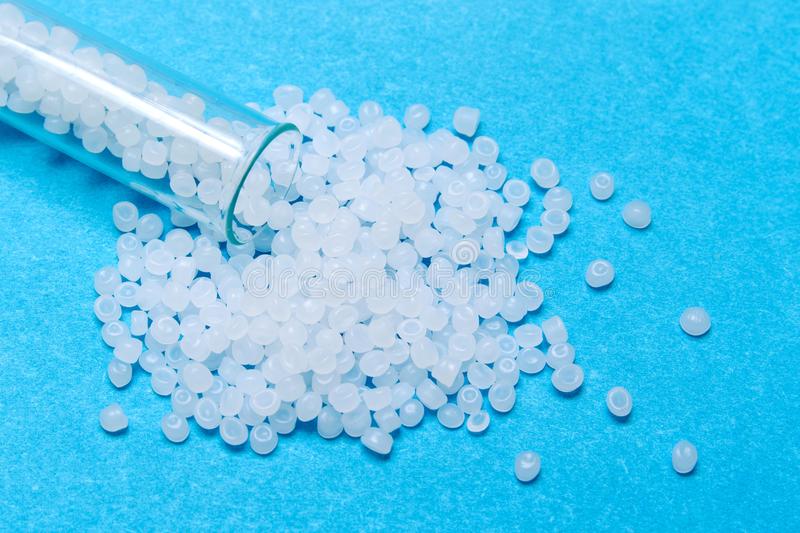
1. Definition
Polypropylene pellets are small cylindrical shaped particles of polypropylene that serve as a raw material in the injection molding process. They are made by melting down polypropylene resin and then cooling and solidifying it into small pellets that can be easily transported and stored. These pellets can then be melted down again and molded into various shapes and products through the injection molding process.
2. Characteristics
Polypropylene is a thermoplastic polymer known for its excellent chemical resistance, high melting point, and good dimensional stability. It is also lightweight, has good flow properties, and is recyclable. Additionally, it is an excellent electrical insulator, making it suitable for electrical applications. These characteristics make polypropylene an ideal material for a variety of injection molding applications.
3. Applications
Polypropylene pellets for injection molding are used to manufacture a wide range of products in various industries. Some of the most noticeable products made from polypropylene include:
- Packaging: Polypropylene is commonly used in the manufacture of food and beverage containers, as well as cosmetic and personal care product packaging.
- Household appliances: Polypropylene is used in the manufacture of various household appliances, such as vacuum cleaners, food processors, and small kitchen appliances.
- Automotive parts: Polypropylene is used in the manufacturing of various automotive parts, such as under-the-hood components, interior trim, and exterior body parts.
- Medical devices: Polypropylene is used in the manufacture of medical devices, such as syringes, IV bags, and medical trays.
- Toys: Polypropylene is used in the manufacture of toys, such as action figures and dolls.
II. Benefits of polypropylene pellets for injection molding
Polypropylene (PP) pellets have several benefits for injection molding, including:
- Cost-effective: PP is a more affordable material than other thermoplastics, which makes it a popular option for a variety of applications.
- Lightweight: Because PP is lightweight, it is perfect for applications where weight reduction is crucial, including the packaging and automotive sectors.
- Chemical resistance: PP is perfect for usage in severe locations where chemical exposure is a concern since it has strong resistance to a wide variety of chemicals.
- High strength and stiffness: Because PP is strong and stiff, it is perfect for applications where dimensional stability and longevity are crucial.
- Good flow properties: PP has good flow characteristics, making the injection molding process simple. As a consequence, the surface is well-finished, the measurements are precise, and the wall thickness is constant.
- Good dimensional stability: PP has good dimensional stability, which means that even in high-stress and high-temperature applications, it can maintain its shape over time.
- High melting point: PP has a high melting point, which makes it perfect for use in high-temperature applications without melting or deteriorating.
- Recyclable: PP is a recyclable material, making it an eco-friendly option for a variety of applications.
Overall, PP pellets offer a combination of cost-effectiveness, strength, stiffness, and good processing properties, making them a popular choice for many different injection molding applications.
III. Tips when using polypropylene pellets for injection molding
Here are some tips for using polypropylene (PP) pellets for injection molding:
- Drying the material: PP is hygroscopic, meaning that it absorbs moisture from the air. It is important to dry the pellets to a moisture level of less than 0.05% to prevent defects such as sink marks, warpage, and weak spots in the final product.
- Proper melt temperature: It is important to select the appropriate melt temperature to prevent degradation and ensure good flow. The melt temperature should be between 220°C and 270°C, depending on the specific PP resin used.
- Flow rate and packing pressure: A proper flow rate and packing pressure are important to ensure that the material fills the mold completely and forms a solid part. Too high of a flow rate can result in increased cycle times and defects, while too low can result in insufficient filling and poor surface finish.
- Cooling time: The cooling time should be optimized to prevent the warping and cracking of the part. A slow cooling rate can result in warping, while a fast cooling rate can cause cracking.
- Venting: Proper venting of the mold is important to prevent air entrapment and ensure good surface finish. Air entrapment can cause defects such as blisters, voids, and sink marks.
- Mold design: The mold design is critical to ensure consistent, high-quality parts. A properly designed mold will reduce cycle times, prevent defects, and increase productivity.
- Post-processing: Depending on the specific application, post-processing such as painting, plating, or assembly may be necessary. It is important to consider the post-processing requirements when selecting the PP resin and optimizing the molding process.
It is always important to consult the specific PP resin supplier's recommendations and data sheets for detailed information on processing guidelines and conditions.
IV. Polypropylene compounds for injection molding
In addition to using polypropylene pellets for injection molding, customers can use polypropylene compounds (made from polypropylene plastic and other additives based on the requirements of the finished product) to enhance the desired properties. Currently, on the market, there are popular types of polypropylene compounds for injection molding as follows.
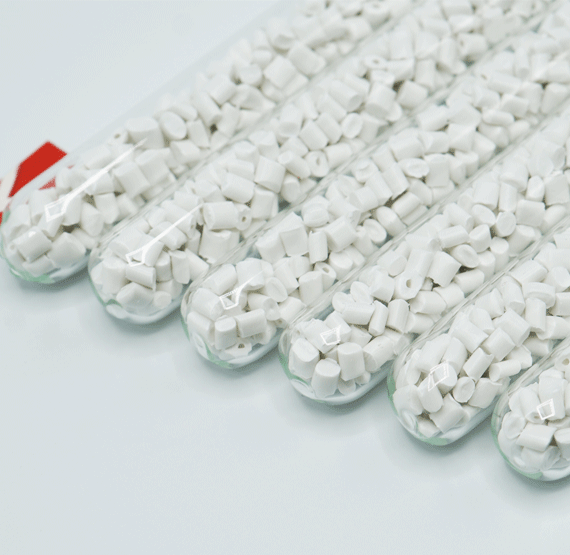
Definition: Flame retardant polypropylene pellets are a type of thermoplastic material made of polypropylene that is treated to increase its resistance to fire.
Characteristics: Flame retardant polypropylene pellets have the typical characteristics of polypropylene and the added fire-resistant properties. These pellets are known for their excellent resistance to heat, chemicals, and impact, making them ideal for use in electrical and electronic applications, as well as in construction and transportation. Additionally, these materials have low smoke and toxic gas emission, which makes them suitable for use in applications where fire safety is a concern. Flame retardant polypropylene pellets are also lightweight and have good molding and processing characteristics, making them easy to work with in the injection molding process.
Applications: Flame retardant polypropylene pellets are widely used in a variety of industries and applications. These materials are commonly used in the manufacture of electrical equipment and components, such as wiring and cable jackets, consumer electronics, and other flame-resistant plastic parts. Additionally, flame retardant polypropylene pellets are used in the construction of buildings, vehicles, and other transportation equipment, as well as in consumer goods such as toys, household appliances, and other items where fire safety is a concern.

Definition: Conductive polypropylene pellets are a type of thermoplastic material made of polypropylene that has been treated with carbon black conductive to increase its electrical conductivity.
Characteristics: Conductive polypropylene pellets have the typical characteristics of polypropylene ande the added benefit of electrical conductivity. These pellets are known for their excellent resistance to heat, chemicals, and impact, making them ideal for use in electrical and electronic applications. Additionally, conductive polypropylene pellets are lightweight and have good molding and processing characteristics, making them easy to work with in the injection molding process. They also have good electromagnetic interference (EMI) shielding properties, which helps to reduce the electromagnetic interference in electronic devices.
Applications: Conductive polypropylene pellets are widely used in the electrical and electronics industries, particularly in the manufacture of electronic devices and components. These materials are commonly used in the production of EMI shielding components, such as cable jackets and electrical equipment housing. Conductive polypropylene pellets are also used in the manufacture of antistatic components and in applications where electrical conductivity is required, such as in sensors and other electronic components. With its combination of strength, electrical conductivity, and heat resistance, conductive polypropylene pellets are an ideal choice for many different electrical and electronic applications.
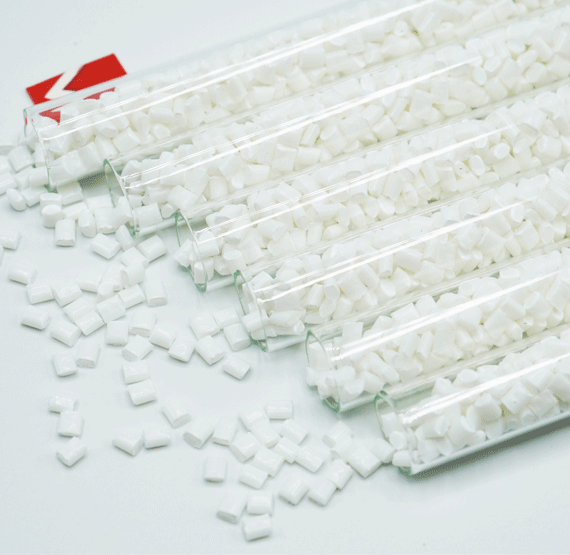
Definition: BaSO4 polypropylene pellets are a type of thermoplastic material made of polypropylene that has been treated with barium sulfate (BaSO4) to increase its opacity and improve its dimensional stability.
Characteristics: BaSO4 polypropylene pellets have the typical characteristics of polypropylene and the improved opacity and dimensional stability due to the addition of barium sulfate. These pellets are known for their excellent resistance to heat, chemicals, and impact, making them ideal for use in a variety of applications. Additionally, BaSO4 polypropylene pellets are lightweight and have good molding and processing characteristics, making them easy to work with in the injection molding process. They also have good stiffness and impact resistance, which makes them suitable for use in applications where dimensional stability and durability are important.
Applications: BaSO4 polypropylene pellets are widely used in a variety of industries, including packaging, consumer goods, and the automotive industry. These materials are commonly used in the manufacture of opaque packagings, such as containers and lids, where improved opacity is desired. BaSO4 polypropylene pellets are also used in the production of consumer goods, such as toys, household appliances, and other items where dimensional stability and impact resistance are important. With its combination of strength, improved opacity, and dimensional stability, BaSO4 polypropylene pellets are an ideal choice for many different applications.
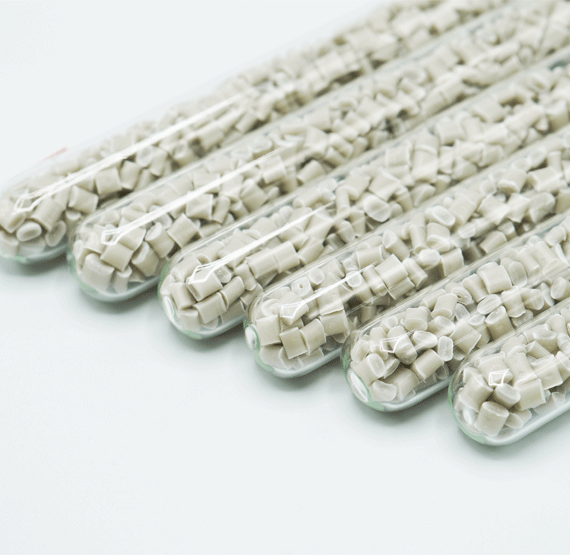
Definition: Talc polypropylene pellets are a type of thermoplastic material made of polypropylene that has been treated with talc to improve its dimensional stability and reduce warping.
Characteristics: Talc polypropylene pellets have the typical characteristics of polypropylene and the improved dimensional stability and reduced warping due to the addition of talc. These pellets are known for their excellent resistance to heat, chemicals, and impact, making them ideal for use in a variety of applications. Additionally, talc polypropylene pellets are lightweight and have good molding and processing characteristics, making them easy to work with in the injection molding process. They also have good stiffness and impact resistance, which makes them suitable for use in applications where dimensional stability and durability are important.
Applications: Talc polypropylene pellets are widely used in a variety of industries, including packaging, consumer goods, and the automotive industry. These materials are commonly used in the manufacture of packaging, such as containers and lids, where improved dimensional stability and reduced warping are desired. Talc polypropylene pellets are also used in the production of consumer goods, such as toys, household appliances, and other items where dimensional stability and impact resistance are important. With its combination of strength, improved dimensional stability, and reduced warping, talc polypropylene pellets are an ideal choice for many different applications.
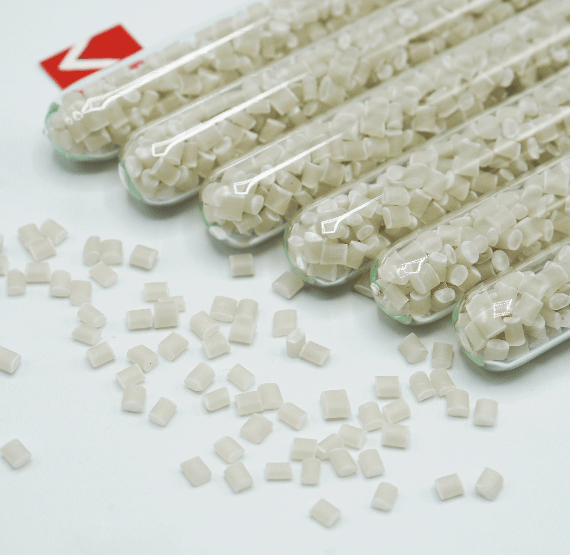
Definition: Glass bead polypropylene pellets are a type of thermoplastic material made of polypropylene that has been treated with glass beads to increase its impact resistance and improve its dimensional stability.
Characteristics: Glass bead polypropylene pellets have the typical characteristics of polypropylene and the improved impact resistance and dimensional stability due to the addition of glass beads. These pellets are known for their excellent resistance to heat, chemicals, and wear, making them ideal for use in a variety of applications. Additionally, glass bead polypropylene pellets are lightweight and have good molding and processing characteristics, making them easy to work with in the injection molding process. They also have good stiffness and impact resistance, which makes them suitable for use in applications where dimensional stability and durability are important.
Applications: Glass bead polypropylene pellets are widely used in a variety of industries, including packaging, consumer goods, and the automotive industry. These materials are commonly used in the manufacture of packaging, such as containers and lids, where improved impact resistance and dimensional stability are desired. Glass bead polypropylene pellets are also used in the production of consumer goods, such as toys, household appliances, and other items where dimensional stability and impact resistance are important. With its combination of strength, improved impact resistance, and dimensional stability, glass bead polypropylene pellets are an ideal choice for many different applications.
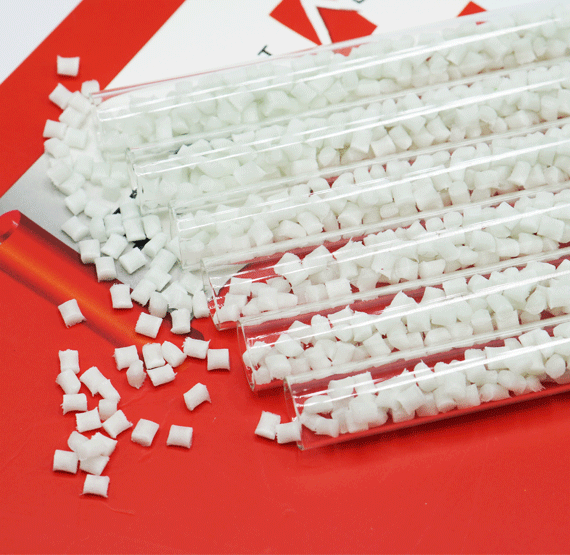
Definition: Glass fiber reinforced polypropylene (PP) pellets are a type of thermoplastic material made by incorporating glass fibers into polypropylene.
Characteristics: Glass fiber reinforced polypropylene pellets have high strength and stiffness, making them ideal for use in applications where dimensional stability and durability are important. The addition of glass fibers enhances the material's dimensional stability, heat resistance, and creep resistance, making it suitable for use in high-stress and high-temperature applications. Glass fiber reinforced polypropylene has good molding and processing characteristics, making it easy to work with in the injection molding process. Additionally, the material has good surface finish and resistance to wear and chemicals, making it ideal for a wide range of industrial applications.
Applications: Glass fiber reinforced polypropylene is widely used in the automotive industry, where it is utilized to manufacture parts such as engine covers, battery trays, and body parts. It is also used in the production of consumer goods such as toys and household appliances, as well as in the packaging industry where improved dimensional stability and impact resistance are desired. With its combination of high strength, stiffness, and improved dimensional stability, glass fiber reinforced polypropylene is an ideal choice for many different applications.
EuroPlas is a leading supplier of high-quality polypropylene pellets for injection molding. With over 15 years of experience in the industry and a commitment to providing top-notch materials, we are a trusted and reliable source for manufacturers in a variety of industries. Whether you are looking for a specific type of polypropylene pellets or simply need a dependable supplier for your production process, EuroPlas is the company you can count on. With a comprehensive selection of polypropylene pellets, expert technical support, and a team of knowledgeable professionals, we provide a hassle-free and efficient solution for all your injection molding needs. If you’re interested, contact us now!